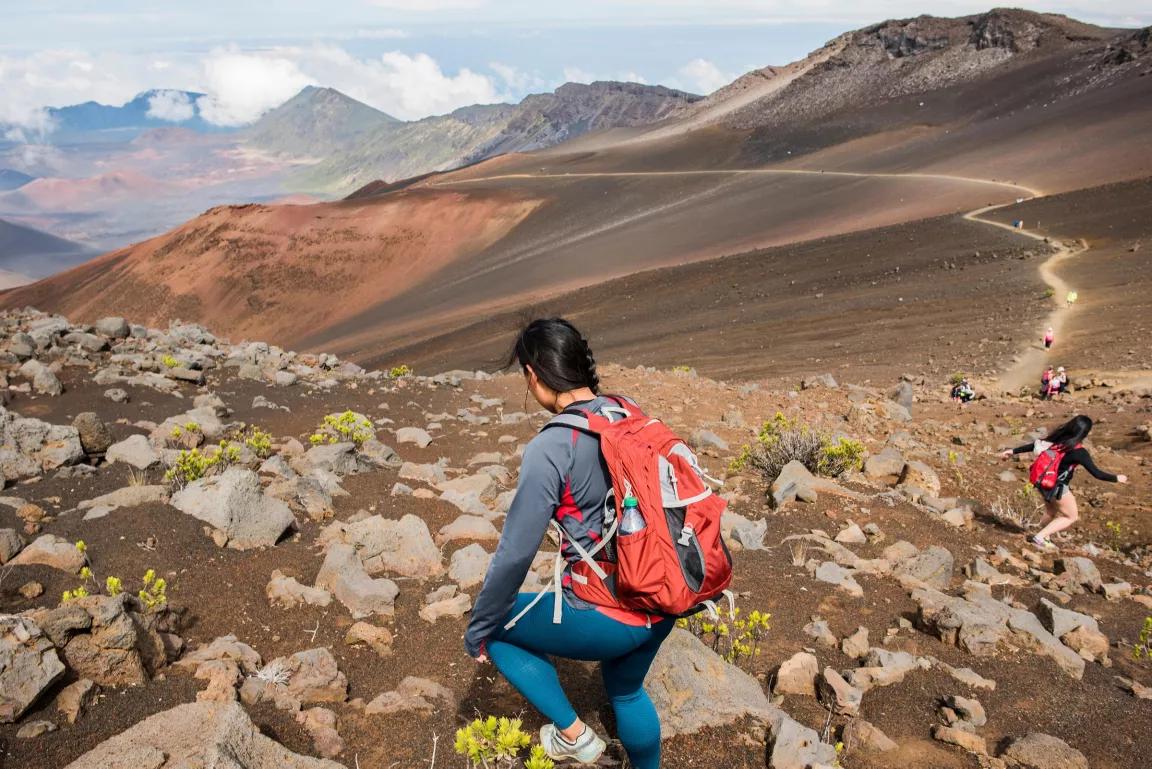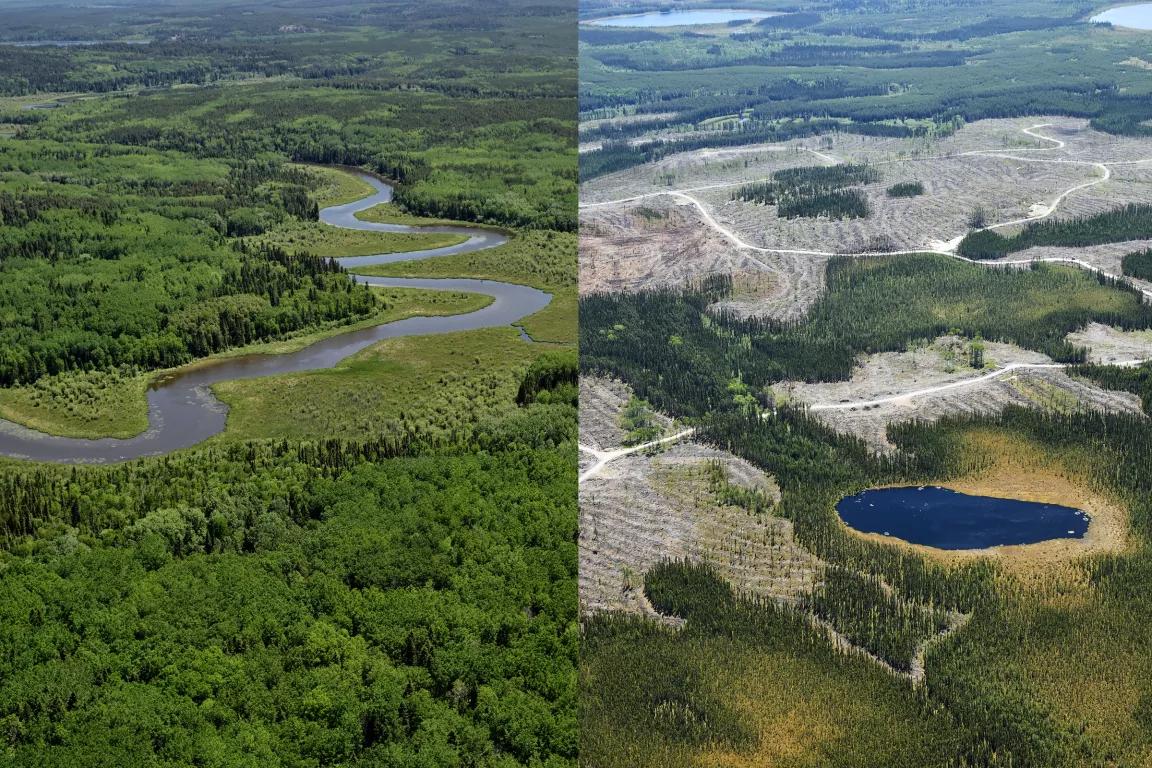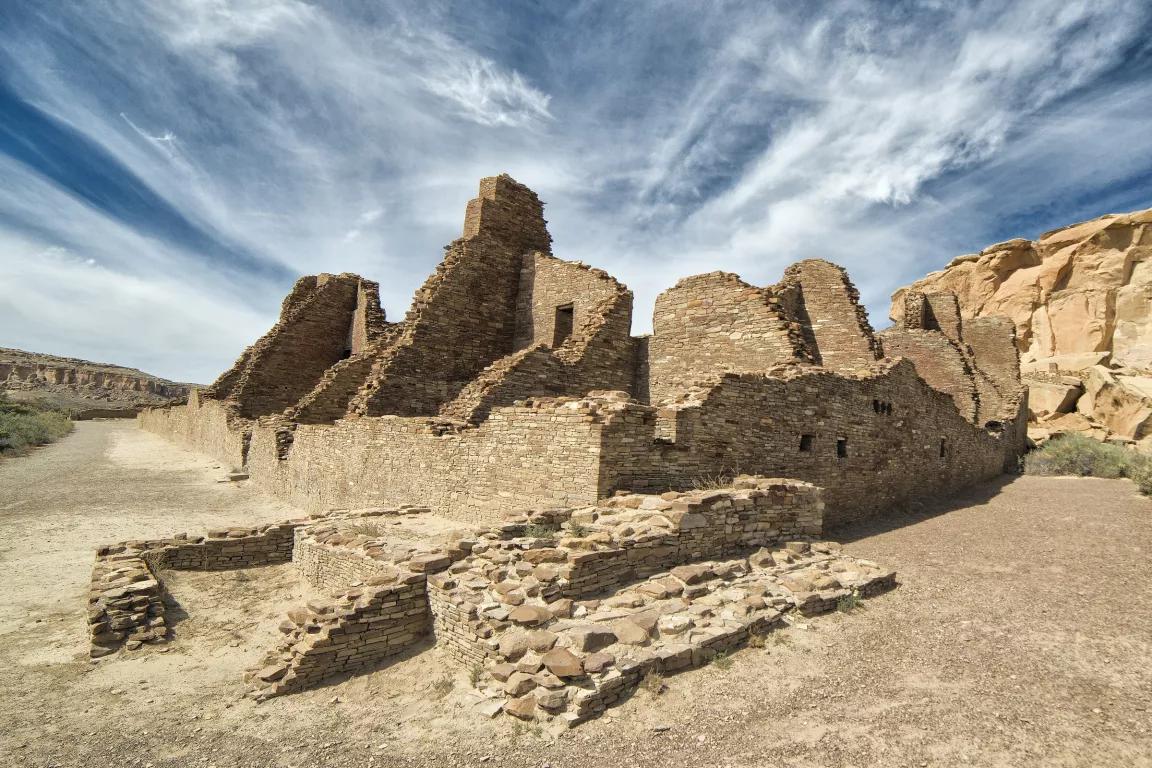Championing Conservation as Climate Action
NRDC is committed to a new, more inclusive model for saving nature and, ultimately, ourselves.
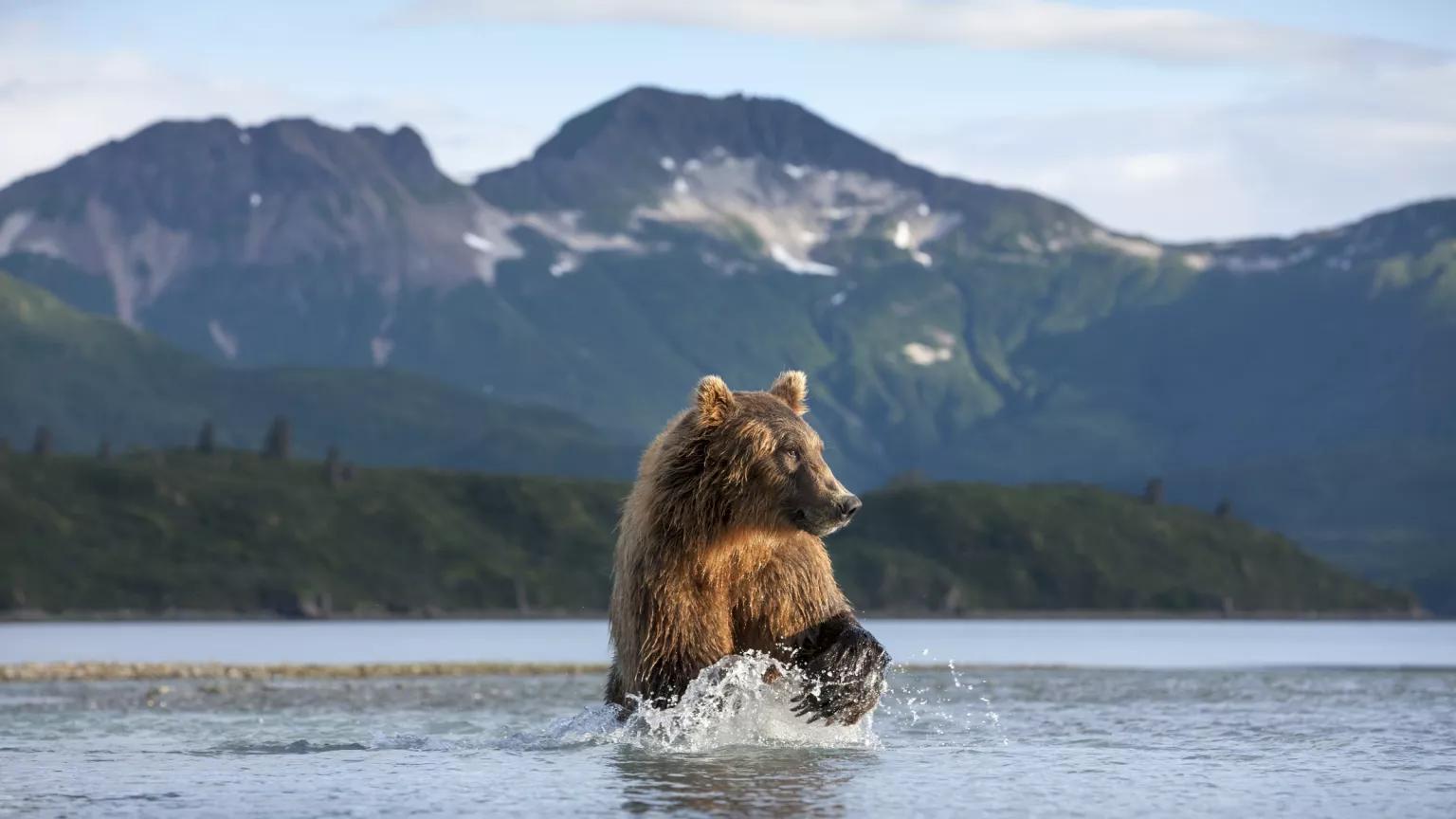
Paul Souders/Getty Images
Intact ecosystems like forests, oceans, and wetlands not only provide critical habitat, but they also capture and store vast amounts of carbon, which makes preserving nature a potent climate solution. In contrast, unmitigated climate change promises to devastate wildlife populations, from apex predators to pollinators to the tiniest of phytoplankton. NRDC is helping to advance environmental policies that recognize the ways these crises are inextricably linked, and that center the voices and solutions of Indigenous Peoples, who have long stewarded and relied on the lands and waters that countries are now rushing to protect. Together with tribal leaders and partners on the ground, we’re also supporting efforts to save some of the planet’s last intact forests—like Canada’s boreal—from continued destruction, and to secure protections for natural treasures like Utah’s Bears Ears, Alaska’s Bristol Bay, and the Atlantic Ocean’s Northeast Canyons and Seamounts.
A Bold 30x30 Vision
In January, President Biden committed to conserving at least 30 percent of America’s lands, inland waters, and ocean areas by 2030. This goal, also known as “30x30,” is essential to fostering a healthier climate, safeguarding air and water quality, protecting our food supply and health, and preventing mass wildlife extinctions.
NRDC helped secure this promise and is working to ensure that the first-ever national conservation strategy results in meaningful actions to address the intersecting biodiversity and climate crises. The federal strategy also, critically, seeks to remedy the inequitable access to nature that has left people of color more than three times as likely to live in nature-deprived areas. It also highlights the need to engage a wide range of stakeholders in this work, from tribal and Indigenous communities to farmers, ranchers, and outdoors enthusiasts.
“There is no one-size-fits-all solution for conserving our lands, and the ways we can achieve the 30x30 vision are as varied as the landscapes we are trying to protect.”
NRDC experts Helen O’Shea, Kate Poole, and Zak Smith
NRDC knows this all-hands-on-deck approach, favored by four out of five U.S. voters, is what’s required to ensure the health of our planet and future generations. It’s why we’ve advocated for meaningful implementation of the initiative in public comments to the administration and why we’re working with scientists and other stakeholders to identify potential areas deserving of protection. It’s also why we’ve spearheaded a public awareness campaign with e-mails, social media posts, and expert blogs detailing 30x30’s opportunity for Americans to come together to save nature and, ultimately, ourselves.
Saving the Boreal Forest
Canada’s boreal forest, the world’s largest remaining intact forest, is home to hundreds of Indigenous communities, is a critical refuge for wildlife such as the iconic boreal caribou, and is vital in the fight against climate change. As the most carbon-dense terrestrial ecosystem in the world, it stores twice as much carbon as the world’s oil reserves.
Did You Know?
While all eyes are on the tropics, northern forests are facing a quiet extinction. Russia and Canada rank as countries with the first- and third-highest loss of intact forest loss.
NRDC and our members and activists have continued to pressure the Canadian government to take action and to call out corporations for their destruction of this climate-critical forest. An April analysis by our Canada Program policy advocates found that industrial logging, which clearcuts more than one million acres of Canadian boreal forest every year, is accelerating climate change while undermining the rights of the Indigenous Peoples who have lived there for millennia. And an October report highlighted how carbon-accounting loopholes for the logging industry hinder Canada’s leadership on climate—a cause we elevated ahead of COP26 as part of our push to make countries in the Global North take responsibility for their own unsustainable forest loss. Our activists sent more than 46,000 petitions to pressure Prime Minister Justin Trudeau’s government to address this issue. Additionally, NRDC worked with policymakers in California and New York to advance cutting-edge legislation that would ensure the states’ purchases of forest products do not drive boreal or tropical forest deforestation or degradation or violations of Indigenous rights.
NRDC also highlighted corporate accountability through our third annual Issue with Tissue scorecard. The report shows how America’s largest tissue brands are failing the climate, communities, and biodiversity by creating throwaway products from trees, especially those logged in Canada’s boreal. While many companies are offering more sustainably made toilet paper, paper towels, and tissues, Procter & Gamble (P&G), a target of our boreal advocacy campaign, remains stubbornly stuck in the past, with all of its products receiving an F grade for the third year in a row. But the mounting public pressure is starting to pay off: Last year, at its annual shareholders’ meeting, 67 percent of P&G investors voted in favor of a resolution that calls on the company to stop driving deforestation and forest degradation.
“Saving our planet from climate collapse requires dismantling the tree-to-toilet pipeline that is flushing away some of our most important natural climate allies,” said Shelley Vinyard, NRDC’s boreal corporate campaign manager. “Now is the time for real leadership from the biggest players.”
Protecting Monuments, Defending Sacred Lands
For years, NRDC has used every tool in our arsenal to fight for the protections of three national monuments—Bears Ears, Grand Staircase–Escalante, and Northeast Canyons and Seamounts. One of the most ecologically intact, road-free areas in the Lower 48, Bears Ears is home to countless dwellings, kivas, rock art panels, and other sites cherished by the Hopi Tribe, Navajo Nation, Pueblo of Zuni, Ute Indian Tribe, and Ute Mountain Ute Tribe. Nearby, Grand Staircase–Escalante features some of the region’s most beloved badlands, cliffs, and canyon systems. Meanwhile, Northeast Canyons and Seamounts is a biodiversity hot spot, teeming with 1,000-year-old corals and offering important habitat for dolphins and whales. Finally, after a long advocacy campaign led by the tribes and supported by NRDC and other environmental allies, President Biden announced in October that he would restore the critical protections denied to these monuments by his predecessor. “This is a victory for science, for future generations, and for anyone who looks to these special places for solace, education, healing, and inspiration,” said NRDC president and CEO Manish Bapna, upon learning the news that the trio will no longer be up for grabs by industry.
In another reversal of former president Trump’s destructive orders, the U.S. Environmental Protection Agency (EPA) reinstated its Clean Water Act process to safeguard Alaska’s Bristol Bay from the Pebble Mine and other large-scale mining. The decision is a major step toward permanently protecting the bay, home to the world’s greatest wild salmon ecosystem and the homeland of the Alutiiq, Dena’ina, and Yup'ik peoples. It also recognizes the voices of the Alaska natives who have rallied against the massive Pebble Mine project for decades. “This is a long-haul kind of thing, and that's the mindset that anybody who's been working on this Pebble fight has had to have,” said Melanie Brown, a fourth-generation Yup’ik and Inupiaq commercial fisher. “It's been hard in a lot of ways, but it’s also been a time to really soul-search and develop a better understanding of what is really most important and the kind of world we want to live in.”
And in the southwestern United States, President Biden and U.S. Interior Secretary Deb Haaland announced a critical proposal to protect an area around New Mexico’s Chaco Culture National Historical Park from new federal oil and gas leasing and drilling. Extensive fossil fuel development has taken place in the area for years, and although NRDC and our frontline community partners successfully challenged some of these drilling permits in court, the Bureau of Land Management was considering allowing more than 3,000 new wells in the area. “Polluters have for too long had their way with this sacred region,” said NRDC senior attorney Alison Kelly after the announcement. “We cannot afford to sacrifice regions like Greater Chaco to the fossil fuel industry if we want to try to avoid the worst effects of climate change."
More Highlights from 2021

Advancing Clean Buildings and Transportation
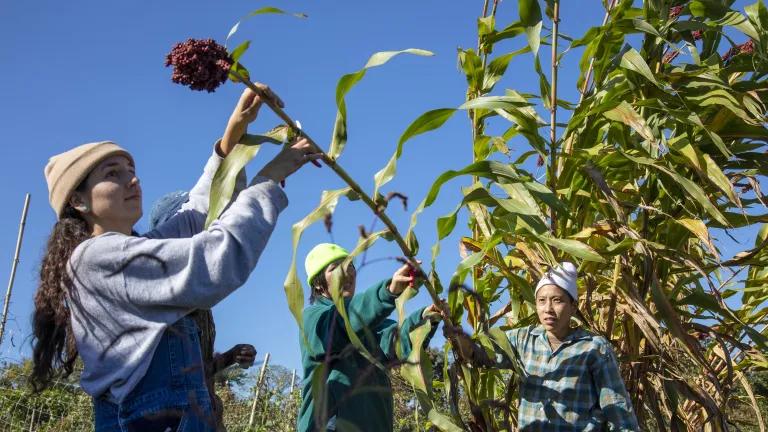
Building a Healthier Food System
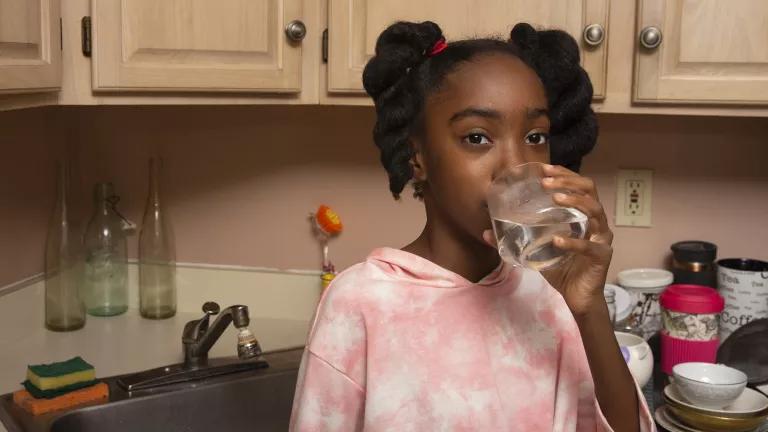
Protecting Public Health
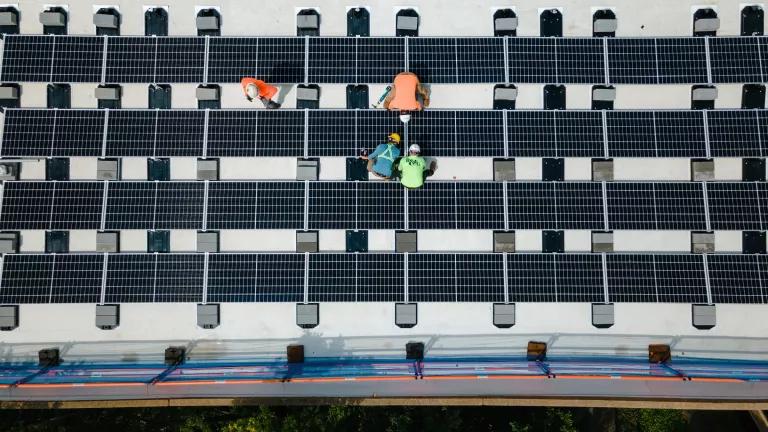
Clearing the Path for Clean Energy
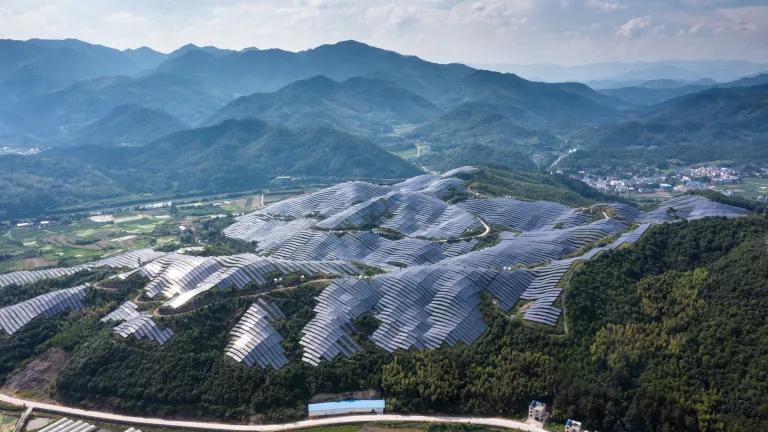
Advancing Global Climate Solutions
Time to Go Big
Check out the rest of our annual report for an overview of what we've accomplished in 2021.


